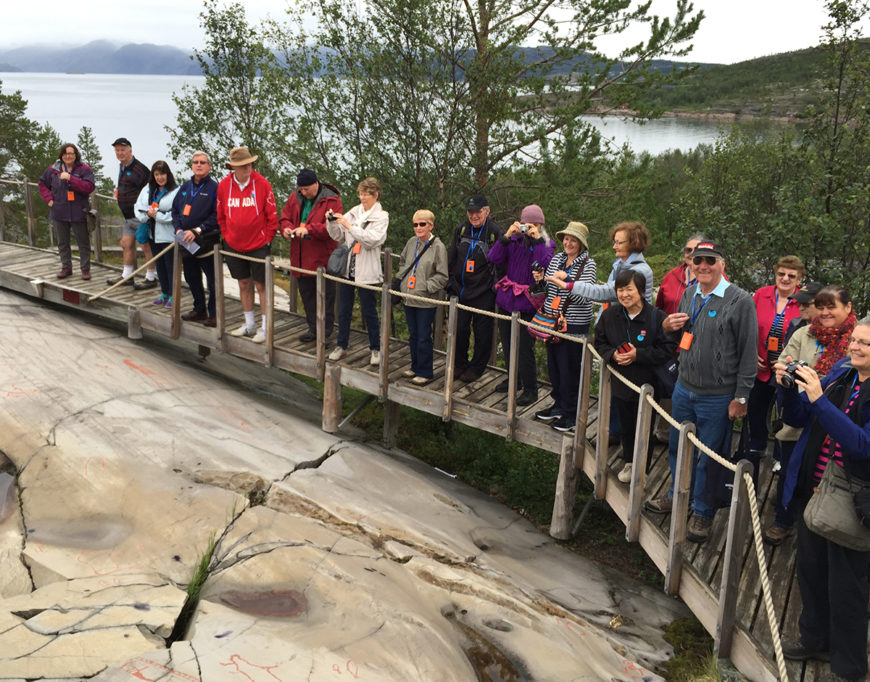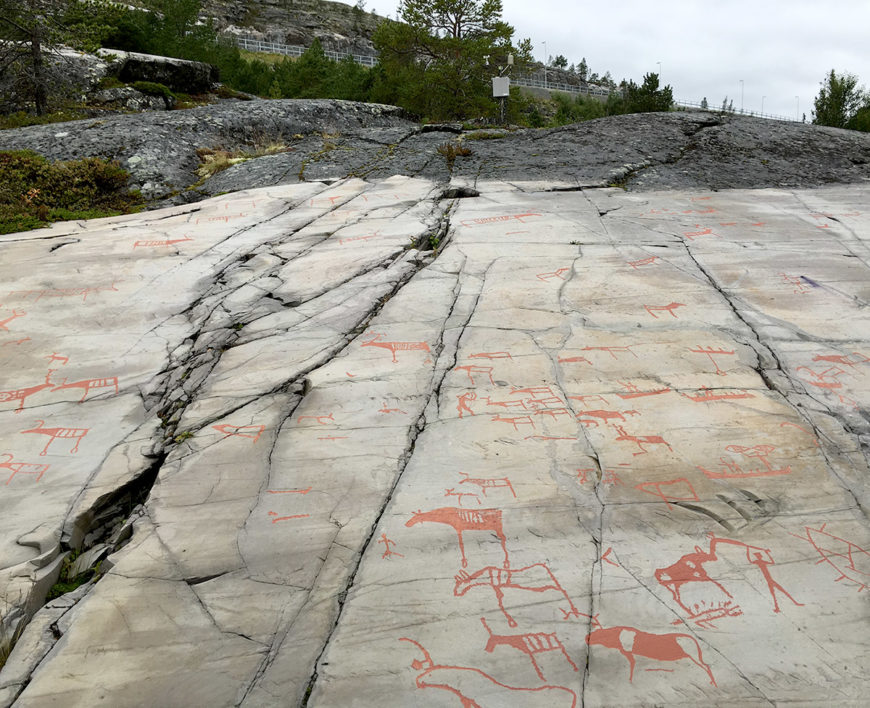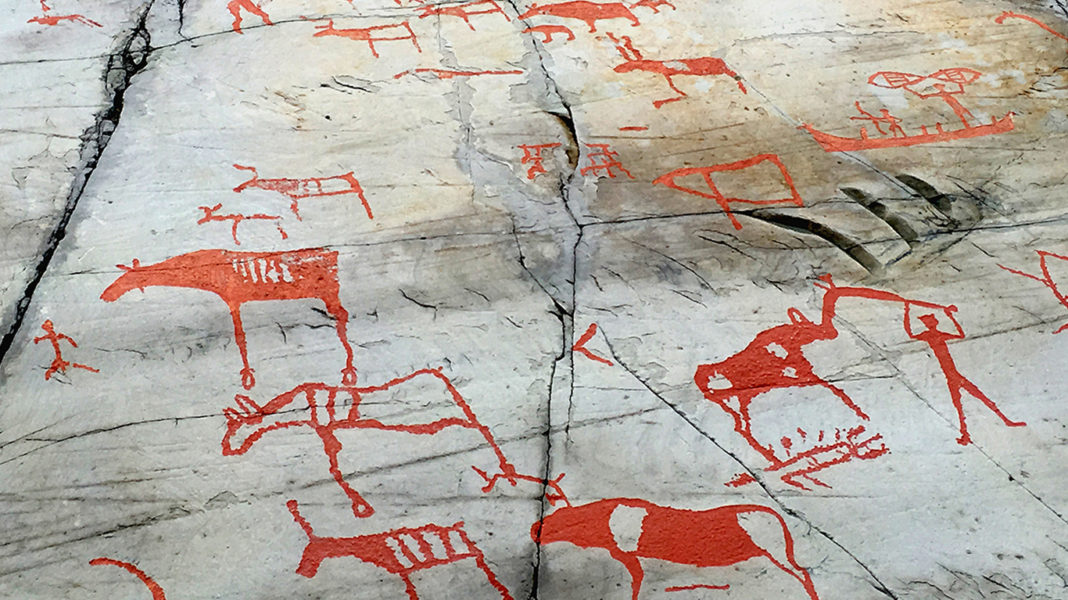Alta, Norway — Although modes of communication have changed considerably over the millennia, the use of simple illustration continues in pretty much the same form it has since around the dawn of human evolution. The application of ancient art as communication is vividly on view in the form of rock art in this Northern Norway area, designated a UNESCO World Heritage Site in 1985.
 The rock art in this wide geographical region has been created through the chipping or carving of the rocks, and through painting on individual and blocks of rock. The Alta-area rock art makes up the largest known collection of rock carvings in northern Europe, and many of the existing pieces of rock art in the region date back to around 5000 B.C.E.
The rock art in this wide geographical region has been created through the chipping or carving of the rocks, and through painting on individual and blocks of rock. The Alta-area rock art makes up the largest known collection of rock carvings in northern Europe, and many of the existing pieces of rock art in the region date back to around 5000 B.C.E.
Alta’s rock art appears to shed light on the worldview of the hunter-gatherers of prehistoric times. The pictures they created function as both simple expression as well as a form of communication between the living and the spirit worlds. The various activities depicted — processions, rituals, dancing, hunting, fishing, boat travel — also serve as a record of prehistoric social life, expressing as well the relationship between the people and the harsh physical landscape they inhabited. The various extant panels include countless representations of elks, reindeer, fish, goose, duck, swan, other birds and more, all well preserved throughout time.
Maintenance of these precious artifacts remains a continual challenge due to the weathering process caused by vegetation, frost and other natural processes — as well as the threat of modern-day vandalism. And the designation of World Heritage Site shines a strong spotlight on the need for preservation. Methods for limiting and slowing the weathering process are continually being developed.
The mission and impact of the World Heritage Sites upon our shared humanity can best be summed up in UNESCO’s own description: “Heritage is our legacy from the past, what we live with today, and what we pass on to future generations. Our cultural and natural heritage are both irreplaceable sources of life and inspiration . . . What makes the concept of World Heritage exceptional is its universal application. World Heritage sites belong to all the peoples of the world, irrespective of the territory on which they are located.” (see http://whc.unesco.org/en/about/)
 The rock art of Alta can now be viewed in an online digital archive maintained by the Alta Museum (www.alta.museum.no). The expansion of this archive is an ongoing project, and the intention is to also include texts, videos and other documents containing information about the rock art and its history.
The rock art of Alta can now be viewed in an online digital archive maintained by the Alta Museum (www.alta.museum.no). The expansion of this archive is an ongoing project, and the intention is to also include texts, videos and other documents containing information about the rock art and its history.
Having the opportunity today to observe evidence of the creativity of the human spirit manifested so long ago, one is reminded of the words of Philosopher Daisaku Ikeda, who said: “Human feelings of hope, love, anger and fear are communicated to us through the artist’s work. The vibrations of the artist’s spirit set off similar vibrations within our hearts. This is the essential experience of art, and it is a shared feeling that links the creator and the viewer, transcending boundaries of time and space.”

